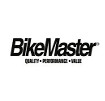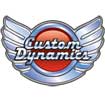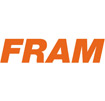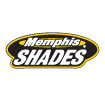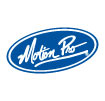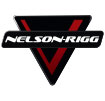www.denniskirk.com
800-969-7501
Motorcycle Windshield Buying Guide
Motorcycle Windshield Guide

Motorcycle windshields are not the sexiest accessory that you can purchase, but they certainly can be one of the most effective. Windshields offer you the protection that you need once you hit the open road. It's amazing how much wind blast affects rider fatigue. Many riders are shocked at how much longer they can ride once they install a proper windshield that will take the brunt of the wind off of them. A motorcycle windshield will also keep you protected from adverse weather and flying debris/bugs. Eliminating fatigue and distraction with a windshield will make your ride much safer and you will be able to have more fun because you won't have to worry about any of those things.
Not all windshields will work for every bike and rider, though. For the best results, you need to take into a few considerations that are unique to you and your bike. Your needs could be completely different from your buddy who owns the same motorcycle. The more you know about the different motorcycle windshields, the better results you will have when you get out on the open road.
Styles/Mounting
The style of bike you have and the style of riding that you do will greatly dictate what type of windshield is best for you. For some bikes, your style options may be very limited, but if you are willing to modify your bike, you can change the style of windshield. For example, if you remove your fairing, you can switch from a windscreen to a fork mounted windshield. The mounting hardware is a different story. You can choose the style of mounting that best fits your needs.
Fixed vs. Quick-Release
This is a decision that many riders struggle with, but it really comes down to personal preference. A fixed mounted windshield is perfect for any rider who is set with the one style of shield that they currently have. They don't want or need to change the shield. They also don't have to worry about removing the windshield for a cover or for hauling the bike.
A rider who would be interested in a quick-release shield would be someone who wants to be versatile. They might want to switch between different size and style windshields or even ride without one. Some riders also like to remove their windshield for storage or for hauling so it does not get damaged. The quick-release allows the rider to make that change in a matter of seconds.
Handlebar Mounted vs. Fork Mounted
Once again, this mounting choice will come down to personal preference. The main advantages of handlebar mounted windshields is that they are more adjustable and generally have a smaller overall size. The smaller size can also be a disadvantage though, as you will not have as much lower coverage. They also have a tendency to wobble and buffet a bit more in the wind.
A fork mounted windshield is ideal for the "set it and forget it" type of rider. The angle is not adjustable (unless you change the rake of your forks). They do tend to be far more stable and also have greater overall coverage compared to a handlebar mounted one. You can go just about as big as you want with a fork mounted windshield as well.
Windscreens
Most motorcycles with fairings will have a windscreen attached to the fairing, with the exception of some handlebar mounted windshields. If you want to change the height of your windscreen, try to choose one that closely matches the shape of your fairing to keep the lines of the bike in-tact, especially for sport bikes.
Materials
While most motorcycle windshields look similar out of the box, the way they perform and wear over time is greatly determined by the material that is used to construct them. There are advantages and disadvantages to each material and it is important to match these with your expectations.
Acrylic/Lucite
The most common material used for motorcycle windshields, acrylic, is also the least expensive option. For casual riders, an acrylic windshield may be the way to go to save on cost. While this material does scuff and scratch easier than polycarbonate, it can usually be restored with buffing. It will also hold its clarity and will not yellow over time. Acrylic is also known as Lucite.
Polycarbonate/Lexan
The advantage of polycarbonate windshields is that they are far more durable and abrasion resistant than acrylic ones. Polycarbonate is far more flexible, which makes it very hard to chip or shatter, making it a good choice for riders who encounter more debris and elements throughout their rides. Unlike acrylic, polycarbonate cannot be polished or buffed to restore scratches and deep scuffs. It is also possible for it to yellow over time due to UV rays and exposure to the elements. Polycarbonate/Lexan does cost more than acrylic, but it should last longer and is far more durable.
Polycarbonate with Quantum Hard Coating
National Cycle windshields are unique in that they are the only ones to be made with the Quantum Hard Coating. This coating makes the outside of the polycarbonate even more scratch resistant and durable. This results in a near shatterproof and almost completely scratch resistant windshield. The clarity of the windshield will remain intact for a much longer time.
How to Measure for a Windshield
Selecting the height and width of your windshield is a fairly subjective decision. While not every rider will want the same height windshield, there is a general rule of thumb that acts as a good starting point. To measure for a windshield, it is helpful to have a helper with you. First you need to sit on your bike in your normal comfortable riding position. Next, extend your arm straight out and level from the tip of your nose or about an inch or two below your line of sight. This is where you want the top of the windshield to end so that you can see above it while riding. The goal is to be able to see the ground 50 feet ahead of you without having to look through the windshield as it may become less see-through with moisture, dirt and debris.
To find the height of the windshield, have your partner measure from that point to about an inch above your headlight or from the top of the fairing. When measuring, make sure that the tape measure or ruler is being held parallel with the rake of your forks as the windshield will follow that line too.
The width of the windshield is purely subjective, but a good tip is to try and match the width of the motorcycle with the width of the shield. Wider baggers and cruisers will look better with wide windshields, while narrower street bikes and sport bikes will look better with a narrower windshield. Of course, a wider windshield will give you more coverage. If you want to limit the exposure to your hands and arms, you may want to choose a wider windshield. This will also limit the clean air that hits you, which can make for an even warmer ride on a hot day.
When looking at new windshields, you may see a number with a + or - in front of it. This number denotes the difference in size compared to the stock windshield. For example, a +5 will be 5 inches taller than stock.
Headlight Cutout
Not all motorcycle headlights are the same size. If the style of windshield that you like has a headlight cutout, you will need to make sure that it is large enough to fit the headlight. The two main sizes of motorcycle headlights are 7 inches and 9 inches. If the stock headlight is larger or is a different size, you will need to look for a windshield that is a specific fitment for your bike.
